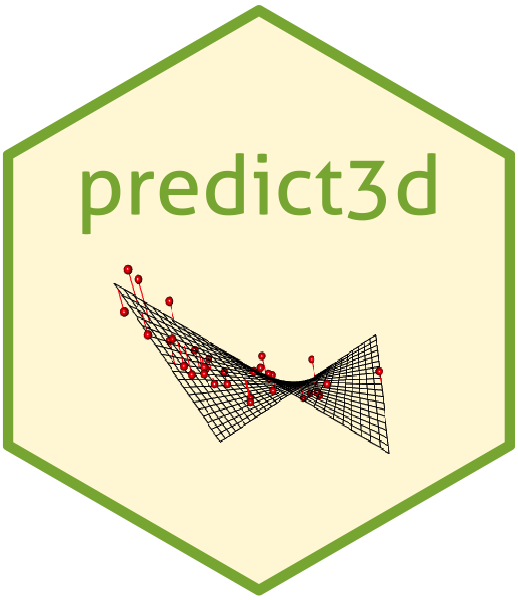
The hardware and bandwidth for this mirror is donated by dogado GmbH, the Webhosting and Full Service-Cloud Provider. Check out our Wordpress Tutorial.
If you wish to report a bug, or if you are interested in having us mirror your free-software or open-source project, please feel free to contact us at mirror[@]dogado.de.

R package predict3d aims to draw predicts plot for
various regression models. The main two functions are ggPredict() for
2-dimensional plot and predict3d() for 3-dimensional plot.
You can install predict3d package from CRAN.
install.packages("predict3d")You can install the developmental version of predict3d
package from github.
if(!require(devtools)) install.packages("devtools")
devtools::install_github("cardiomoon/predict3d"")You can draw linear regression models. First model has one categorical and one continuous explanatory variables.
require(predict3d)
require(rgl)
fit1=lm(Sepal.Length~Sepal.Width*Species,data=iris)
fit1
Call:
lm(formula = Sepal.Length ~ Sepal.Width * Species, data = iris)
Coefficients:
(Intercept) Sepal.Width
2.6390 0.6905
Speciesversicolor Speciesvirginica
0.9007 1.2678
Sepal.Width:Speciesversicolor Sepal.Width:Speciesvirginica
0.1746 0.2110 You can draw plot for this model. ggPredict() function draws a scatterplot with regression line and shows regression equations parallel to the regression lines.
ggPredict(fit1,digits=1)
predict3d(fit1,radius=0.05)
rglwidget(elementId = "1st")
You can see the live 3d plot at http://rpubs.com/cardiomoon/471347.
The second model has two continuous variables as explanatory variables. You can change the labels and the relative x position and the y position.
fit2=lm(mpg~wt*hp,data=mtcars)
ggPredict(fit2,labels=paste0("label",1:3),xpos=c(0.3,0.4,0.3))
predict3d(fit2)
rglwidget(elementId = "2nd")
You can draw generalized linear models.
require(TH.data)
fit3=glm(cens~pnodes*age*horTh,data=GBSG2,family=binomial)
ggPredict(fit3,se=TRUE,show.text = FALSE)
predict3d(fit3,radius=0.5)
rglwidget(elementId = "3rd")
You can draw the loess model.
fit=loess(mpg~hp*wt,data=mtcars)
ggPredict(fit)
predict3d(fit,radius=2)
rglwidget(elementId = "4th")
Once you have create a model with predict3d(), you can move your object with your mouse or R codes. For example, You can rotate you object with this R codes.
start <- proc.time()[3]
while ((i <- 36*(proc.time()[3] - start)) < 360) {
view3d(i, i/4);
}
play3d(spin3d(axis = c(1, 0, 0), rpm = 30), duration = 2)You can save your 3d plot as a figure file or pdf file.
rgl.bringtotop()
rgl.snapshot("fig1.png")
rgl.postscript("fig2.pdf","pdf")For more information about package rgl, please read the
package vignette at:
https://CRAN.R-project.org/package=rgl/vignettes/rgl.html
You can see the following vignettes published on rpubs.com
Drawing the multiple regression models(Part I)
Part II. Transforming variables
These binaries (installable software) and packages are in development.
They may not be fully stable and should be used with caution. We make no claims about them.
Health stats visible at Monitor.